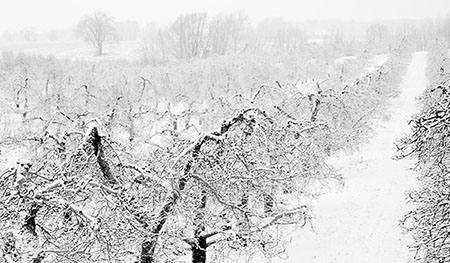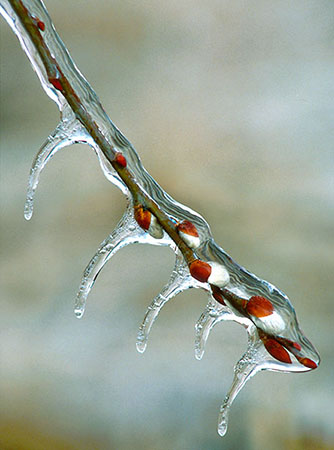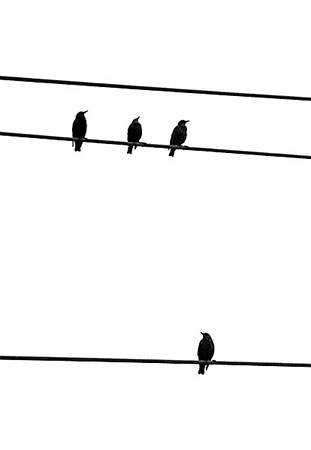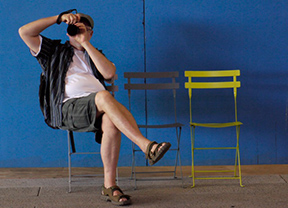Larry Monczka, our special guest writer, is back to offer some basic photography tips to take your pictures from snapshots to wall-worthy. It’s all in the details.
Details, Details!
by Larry Monczka
Analyzing photographs as a judge in photo competitions, I find myself noting certain shortcomings which recur again and again. The "if only" mantra echoes through my mind as I try to figure out why certain images make it, while others don’t. "If only" he had paid more attention to the background. "If only" she had noticed those distractions. "If only" they had simplified.

Basic Photography Tips I
© Larry Monczka
Mostly, it boils down to a lack of attention to detail. In the excitement of seeing a potential photo opportunity, the entry-level photographer tends to zero-in on the one element that first catches his eye. The problem? Our cameras, despite the manufacturers’ claims to "logic" and "intelligence," indiscriminately register everything that is included in the viewfinder, whether the photographer notices it or not.
So while inspiration may come to those with their heads in the clouds, consistently successful images only happen when the shutter-bug’s feet are firmly planted on terra firma. And the "firma" the better. Attention must be paid to the details on the viewing screen. It’s as simple, and as complicated, as that. What follows is a listing of some basic photography tips which can turn a "nein" into a "nine", or even a ten.
Tip #1: Background

© Larry Monczka
It’s a truism that the background should never draw so much visual attention to itself that the viewer’s eye moves immediately towards it, without stopping to savor the centre of interest. While it’s true that a background can succeed merely by being neutral, a more interesting approach is to create a background that is subdued yet discreetly expressive. By its texture, pattern, subtleties of hue, and variations in tonality; by containing echoes of the line and shape of the main subject, a suitable background can reinforce and add to the impact of an image.
Tip #2: Sharpness
The eye tends to more readily accept a falling off into softness behind even a limited zone of crispness. Keep this point in mind when shooting in the f/16-22 aperture range. How frustrating to the viewer to notice blurry "whatsits" in the foreground of an otherwise tack-sharp near/far image. These occur because the photographer either didn’t notice that he was shooting through nearby foreground material or because he hoped that the zone of sharpness would encompass everything from nearby to infinity.
Tip #3: Simplicity
I worship at the throne of simplicity. But beware of simplicity’s pretender—vagueness. While I more or less agree that less is more, sometimes, less is—less. Simplify your photography, by all means. Stop, however, before the point of anemia. Don’t bleed your pictures of those supplemental visual elements that can complement the centre of interest. Start with a visually interesting subject, then work the foreground, middle ground and background to generate an inspired synergy based on the colour, form or mood suggested by the original subject. This "additive" approach can introduce a great deal of personal expression into your picture taking.

© Larry Monczka
Tip #4: Framing
Framing devices, such as arches and tree branches, as well as leading lines—say a curved road or stream—give the photographer a lot of control over where the viewer’s eye is guided.
A frame that blocks the eye from entering the picture space because it is overpowering or blocks the subject it is meant to spotlight is bad enough. But beware of the picture that is all frame with no particular centre of attention. A frame, hoping for a picture to happen, or a lead-in line that leads to nothing eye-catching, promises the snap and crackle, but fails to deliver the pop.
Larry shares some basic photography tips:
"A frame, hoping for a picture to happen, or a lead-in line that leads to nothing eye-catching, promises the snap and crackle, but fails to deliver the pop."
Tip #5: Wedded Bliss
A similar situation involves a picture with superb light, illuminating the most banal subject matter. I refer to this as a "marriage of convenience." Camera in hand, the photographer is suddenly confronted with a rainbow or dramatic God-rays streaming down from a break in the clouds. With no time to search for a subject equal to the magical light, he snaps and hopes for the best. The aware photographer possesses a familiarity with potentially interesting visual scenarios on his home turf. When sweet light appears, the centre of interest is on the same exalted plane—a true marriage.
Tip #6: Point of View
It gets a bit tedious to see those endless pics of the family pet taken from on high. The same goes for photos of flowers and children. When we hunker down, collapse, or otherwise humble ourselves in an effort to portray the world at the level of our subjects, the visual universe unfolds as it should. Down-and-dirty will pay off in visually fresh images.
Tip #7: The Last Detail
I conclude my basic photography tips with this advice. Follow your muse. Set up the shot. Ponder the details revealed in the viewfinder. Enjoy the technical and artistic challenges presented by the visual material before you. Plant your feet firmly on the ground.

© Larry Monczka
Finally, before you go any further, reflect on the fact that there may simply not be a picture worth capturing in front of you. Learning when NOT to push the shutter can be an aesthetic breakthrough. And possibly the most important step you can take in your growth towards photographic excellence.
About Larry Monczka

"In 1979 I happened to visit The Metropolitan Museum in New York City. ‘Intimate Landscapes,’ an exhibition of colour photographs by Eliot Porter was on display. I was thrilled by the beauty of his images of the natural world. That was it for me. Photography has been my creative outlet and avocation ever since.
Porter refers to the ‘magic of restlessness’ in the natural world. Acknowledging this, yet seeking visual order within the randomness, continues to give me great personal aesthetic pleasure."
Larry Monczka is a freelance photographer and writer. His articles on advanced and basic photography tips have been published in PhotoLife, Outdoor Photographer, Nature Photographer, and Shutterbug magazines. Make sure to visit his website:
Next, you may want to try some beginning photography tips.